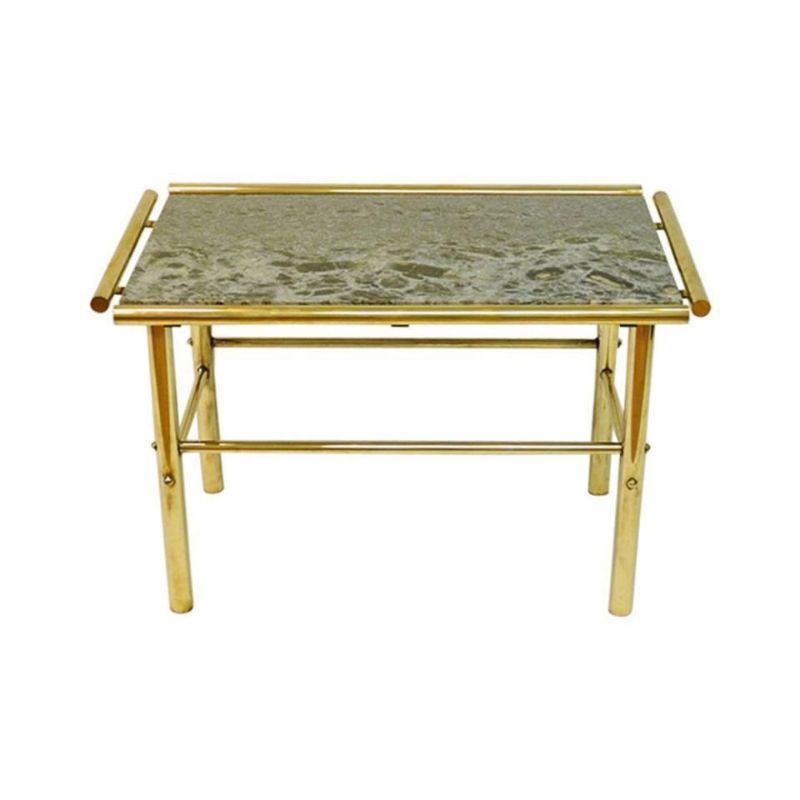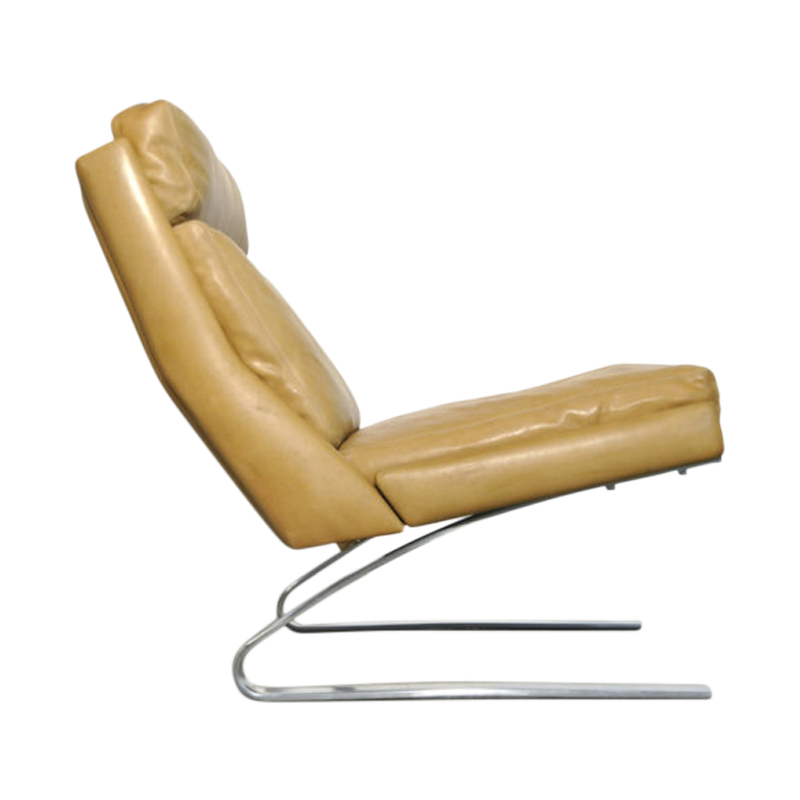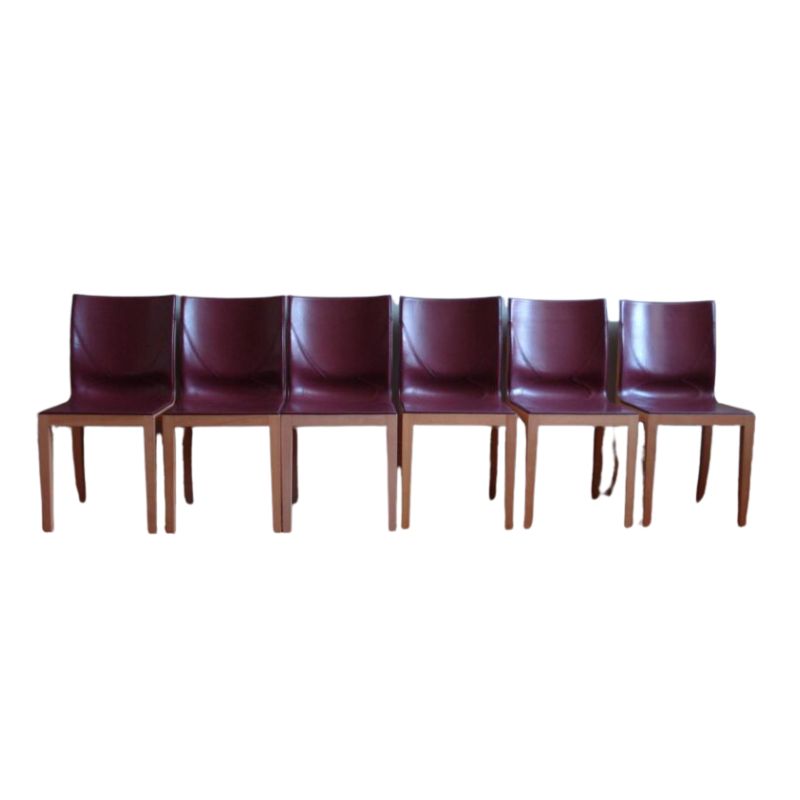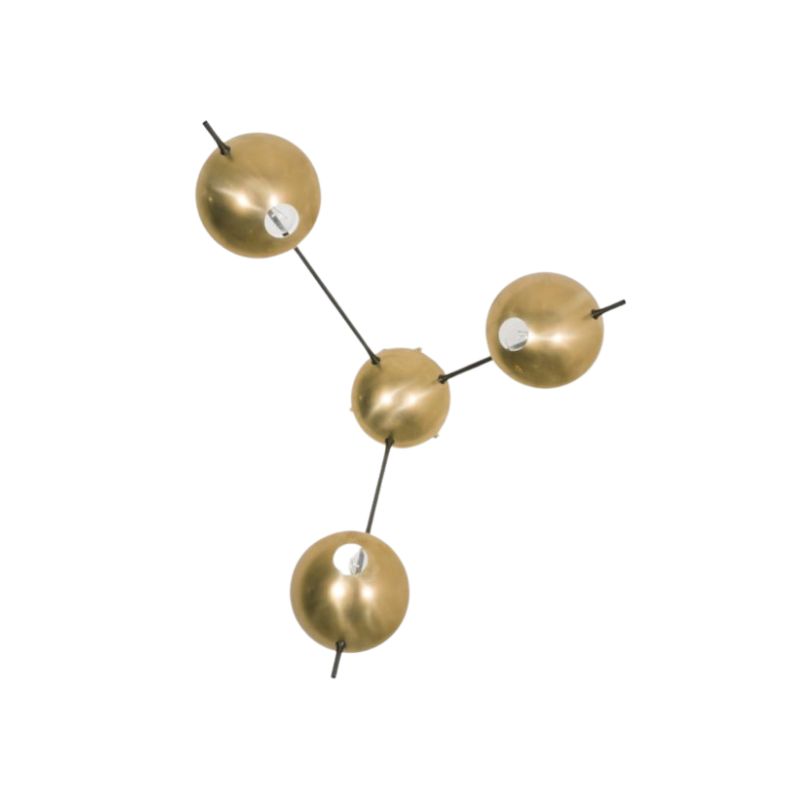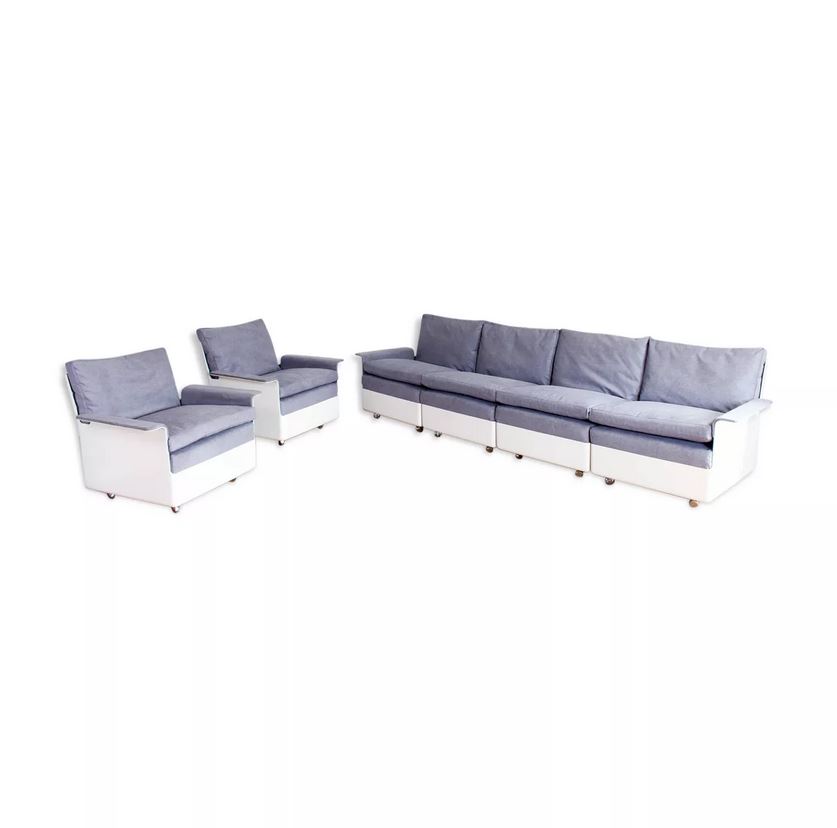Thank you for all of your input. Here a a few photos of the closing mechanism on the tambour doors. The roller is attached to the under side of the desk top. The 'latch' ? is on the inside of the tambour door. The latch photo is taken from a vantage point of inside the drawer compartment looking outward. Also a shot of the lock mechanism. The lock is pretty simple. When in the lock position it nestles under a raised area of the inside of the door, preventing the door from being pulled down. I was hoping someone here with a much better trained eye would possibly be able to either recognize the colors/shape of the møbler tag or identify certain construction characteristics (drawer guides, key head shape, groove at the bottom of the leg Etc.) which was common of X designer or manufacturer. Also, is it possible the møbler tag could even be something as simple as a retailer? Crawling under the desk tonight I noticed a faint 'made in Norway' stamp on the underside of the desk surface as well. Above where the chair would go. Not to mention a bunch of scribbling of crayon from a creative child at some point in its history. Scott
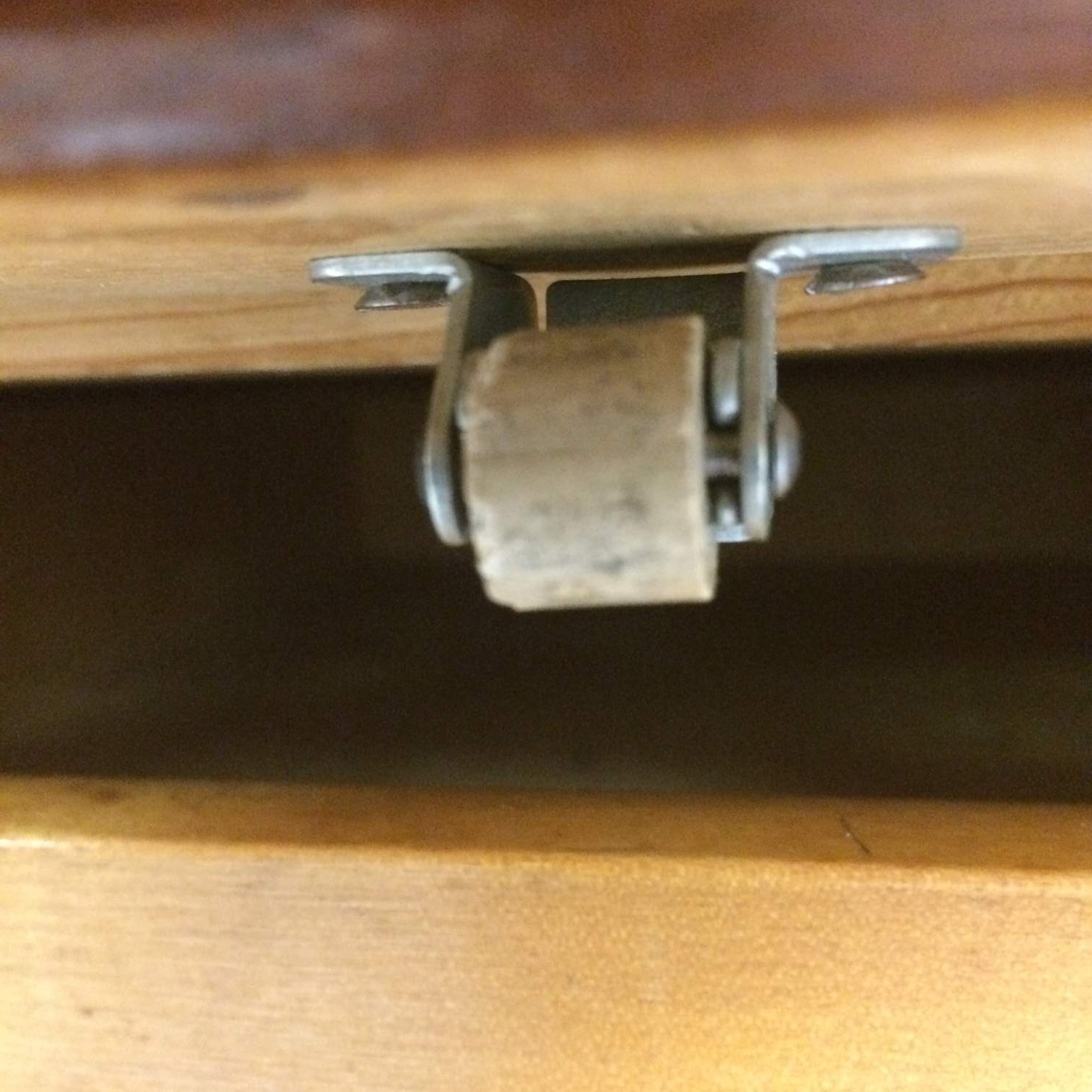
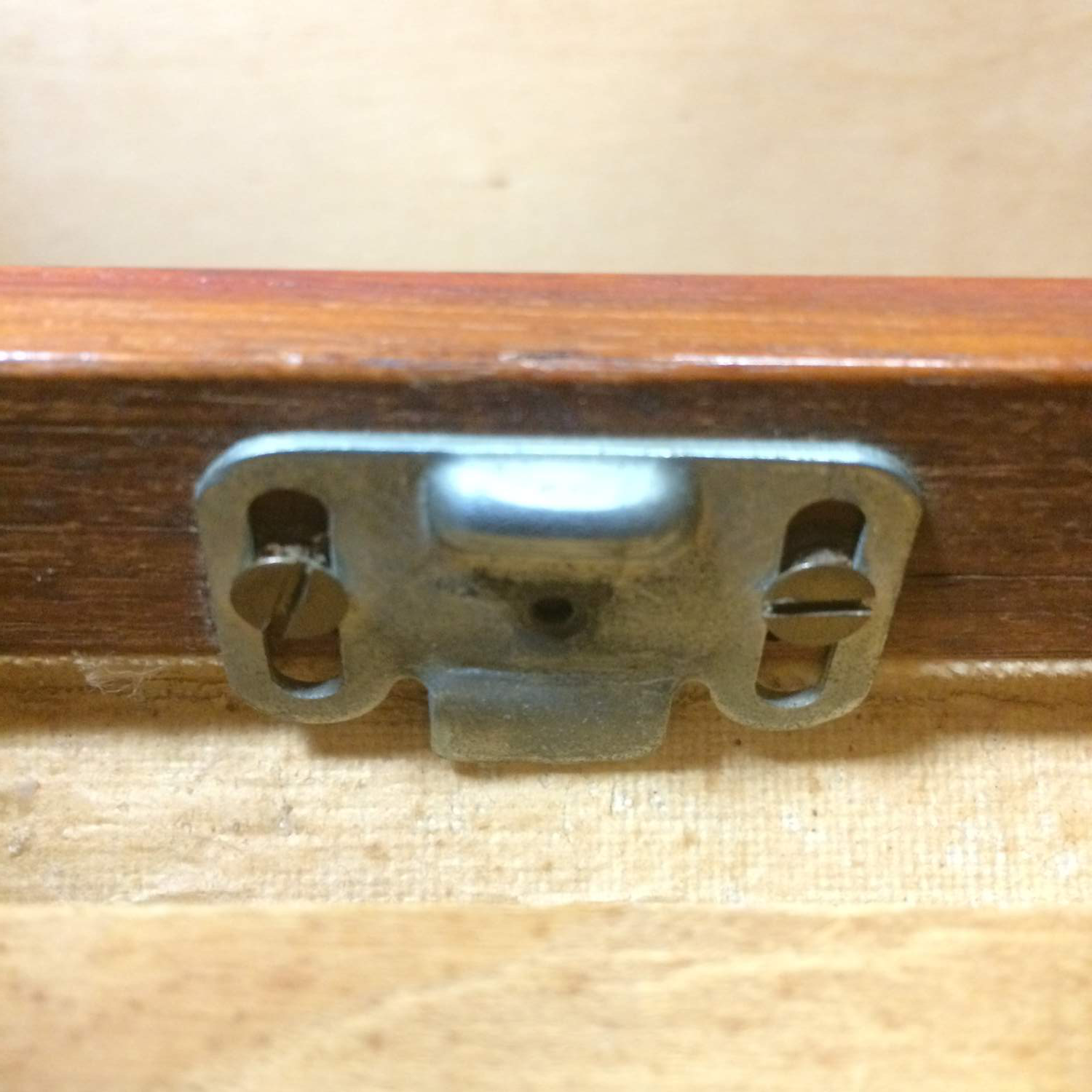
The made in ___ does not indicate an export intent as best I know. Sometimes early pieces say from 1951 or so will be in danish. Quite quickly the the Scandinavians realized that English was the common language of the day and started marking everything in English.
So for instance, I know of a few Danish domestic only market pieces that still say "made in Denmark". And Germany was a big export market, those pieces also say "made in Denmark".
So the made in Norway stamp does not add a lot of contextual information, except the critical piece of information that it was made in Norway.
My guess is that the stamp the the maker. Møbler can also indicate a retailer, but I have a feeling it indicates the maker in this case.
Norwegian pieces can be quite hard to indentify because they are less well known.
I would pin my hopes on finding another tag, identical, or visually similar, that says who the maker is. You may well not find it on a desk, or another desk like this one. Then if you are lucky that might lead you to a designer, or a reasonable guess as tot the designer.
If you want to look at a million photos, you might be able to figure out the maker by little details like the hardware. (I once did this with a Norwegian sideboard made by Gustav Bahus, so it is possible)
And it is a really, really gorgeous desk. I am jealous. And I already have two of the finest Danish desks one can possibly find, so I don't get jealous of a desk easily.
Thanks for the kind words Leif. I appreciate that. I have spent quite a bit of time looking online hoping to come across a similar logo/tag. No luck yet.
As far as looking for construction and hardware similarities, I haven't spent much time doing that.
What often happens to me is info or a photo will pop up when I'm looking for info on something completely different. Hopefully the Google gods will be kind enough to have that happen again.
Thanks everyone for your input and help.
Scott
Oh, sorry! I missed the reference to Norway in your first post.
Has anyone seen a stenciled "MADE IN NORWAY" like that before? ID infor is either on labels, incised in the wood, or inked onto the wood but I don't think I've seen too many that were stenciled rather than stamped. American furniture was stenciled a lot, I think. But I also think that marks are not classified by whether they're stenciled or stamped when people describe them.
Hey, that would be a great project for someone (with better organizational skills than me)---collect images of as many furniture marks as possible (i mean like for Scandinavian stuff--some limits would be necessary) and make them sortable by the medium of the mark, country of origin, alphabetically, and however else would be useful. And then put it out there. Anyone with a partial label might then have an easier chance of tracking down full info. I think I've seen one site with a fair number of names on it, and there are pretty good sites for ceramics (Royal Copenhagen has really great one) but nothing with multiple sort options for furniture.
Very good. For those not familiar with the difference between a stencil and a stamp or other impression, the stenciled alphabet will always provide for the "islands" -- the enclosed portions of the letters Aa, Bb, Dd, e, g, Oo, Pp, Qq, R -- to be connected to the ground around the letter(s). In addition, many stencil fonts will provide additional reinforcement to the stencil material by breaking the letter into discrete parts. We see this in the MADE IN NORWAY stencil above, in virtually all of its characters.
If you need any help, please contact us at – info@designaddict.com



